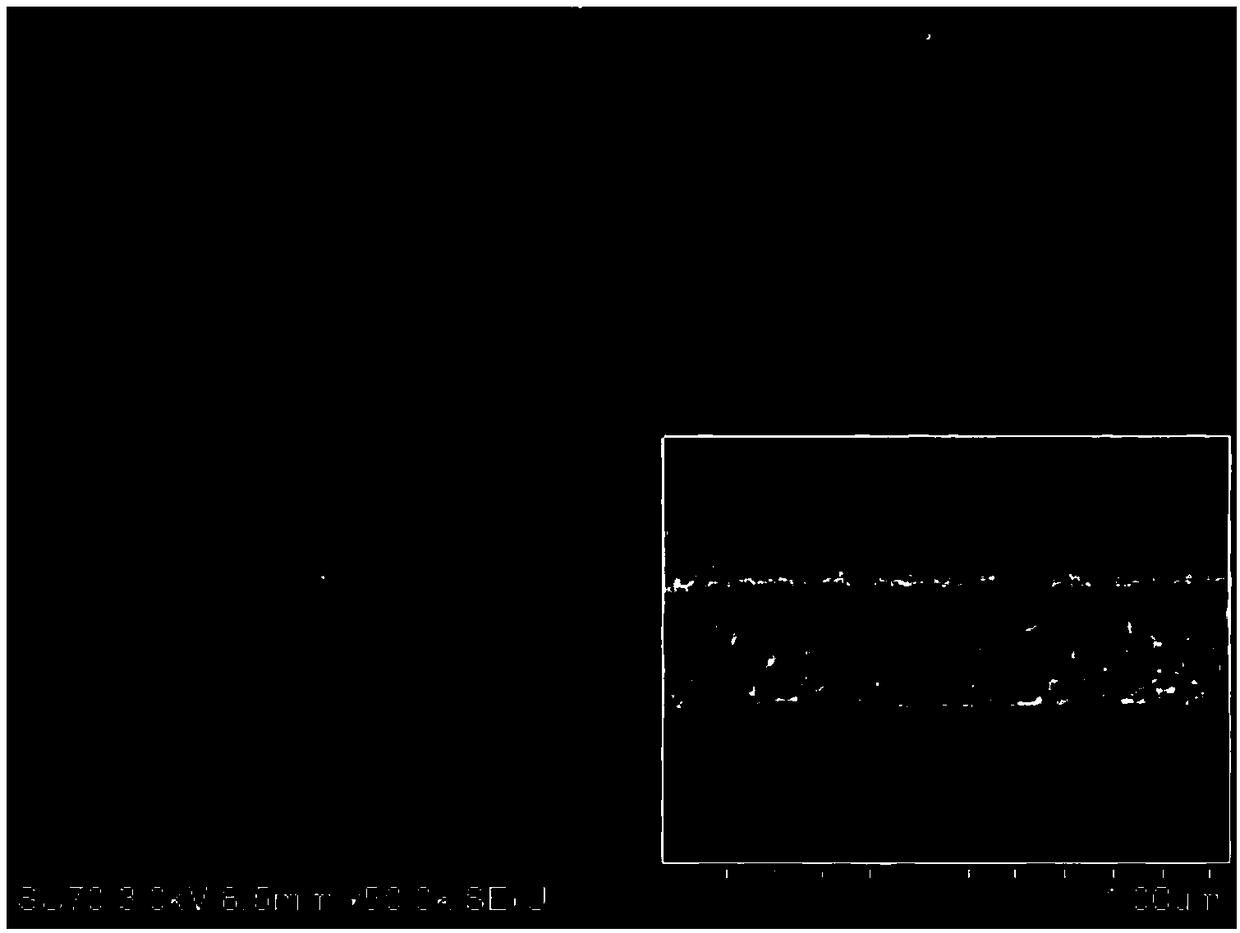Wide-temperature denitration catalyst and preparation method thereof
A denitrification catalyst and catalyst technology, applied in the direction of catalyst activation/preparation, chemical instruments and methods, physical/chemical process catalysts, etc., can solve the problems of high mechanical strength requirements, unguaranteed service life, easy collapse or peeling of catalysts, etc. , to achieve good denitrification efficiency, improve the ability to resist arsenic poisoning, and make it easier to decompose
- Summary
- Abstract
- Description
- Claims
- Application Information
AI Technical Summary
Problems solved by technology
Method used
Image
Examples
Embodiment 1
[0028] Dissolve picric acid in ethanol to prepare a 0.01mol / L solution, then add deionized water, hydrochloric acid (concentration 37.5%), tetrabutyl titanate, antimony trichloride, stir well to obtain a hydrothermal solution, hydrothermal The volume ratio of ethanol, deionized water and hydrochloric acid in the solution is 1:3:2, the concentration of tetrabutyl titanate is 0.1mol / L, and the concentration of antimony trichloride is 0.001mol / L; The titanium substrate was placed in a reaction kettle, and kept at 140°C for 2 hours. After the reaction, the reaction kettle was naturally cooled to room temperature, and the titanium substrate was taken out, washed with ethanol and deionized water repeatedly to obtain a catalyst carrier; Add ammonium metavanadate to the ethanolamine solution, and after it is completely dissolved, add deionized water, cerium nitrate, and ammonium heptamolybdate, and stir evenly to obtain an impregnation solution. The concentration of ammonium metavanada...
Embodiment 2
[0031] Dissolve tartaric acid in ethanol to prepare a 0.03mol / L solution, then add deionized water, hydrochloric acid (concentration 37.5%), tetrabutyl titanate, antimony acetate, stir well to obtain a hydrothermal solution, and ethanol in the hydrothermal solution The volume ratio of , deionized water and hydrochloric acid is 1:4:2, the concentration of tetrabutyl titanate is 0.3mol / L, and the concentration of antimony acetate is 0.01mol / L; the hydrothermal solution and the cleaned titanium substrate are placed in the reaction In the kettle, keep warm at 160°C for 4h. After the reaction, the reaction kettle was naturally cooled to room temperature, and the titanium substrate was taken out, washed with ethanol and deionized water repeatedly to obtain a catalyst carrier; Ammonium vanadate, after being completely dissolved, add deionized water, cerium nitrate, ammonium heptamolybdate, and stir evenly to obtain an impregnating solution. The ratio is 1:0.5:10; according to the are...
Embodiment 3
[0034]Dissolve oxalic acid and citric acid in ethanol to prepare a 0.055mol / L solution, then add deionized water, hydrochloric acid (concentration 37.5%), tetrabutyl titanate, antimony nitrate, and stir to obtain a hydrothermal solution. The volume ratio of ethanol, deionized water, and hydrochloric acid in the solution is 1:4.5:2.5, the concentration of tetrabutyl titanate is 0.55mol / L, and the concentration of antimony nitrate is 0.02mol / L; the hydrothermal solution and the cleaned titanium substrate Put it in a reaction kettle and keep it warm at 180°C for 8 hours. After the reaction, the reaction kettle was naturally cooled to room temperature, and the titanium substrate was taken out, and washed with ethanol and deionized water repeatedly to obtain a catalyst carrier; Ammonium metavanadate was added to the solution, and after being completely dissolved, deionized water, cerium nitrate, and ammonium heptamolybdate were added, and the impregnation solution was obtained after...
PUM
| Property | Measurement | Unit |
|---|---|---|
| specific surface area | aaaaa | aaaaa |
| abrasion resistance | aaaaa | aaaaa |
| specific surface area | aaaaa | aaaaa |
Abstract
Description
Claims
Application Information
 Login to View More
Login to View More - R&D
- Intellectual Property
- Life Sciences
- Materials
- Tech Scout
- Unparalleled Data Quality
- Higher Quality Content
- 60% Fewer Hallucinations
Browse by: Latest US Patents, China's latest patents, Technical Efficacy Thesaurus, Application Domain, Technology Topic, Popular Technical Reports.
© 2025 PatSnap. All rights reserved.Legal|Privacy policy|Modern Slavery Act Transparency Statement|Sitemap|About US| Contact US: help@patsnap.com

